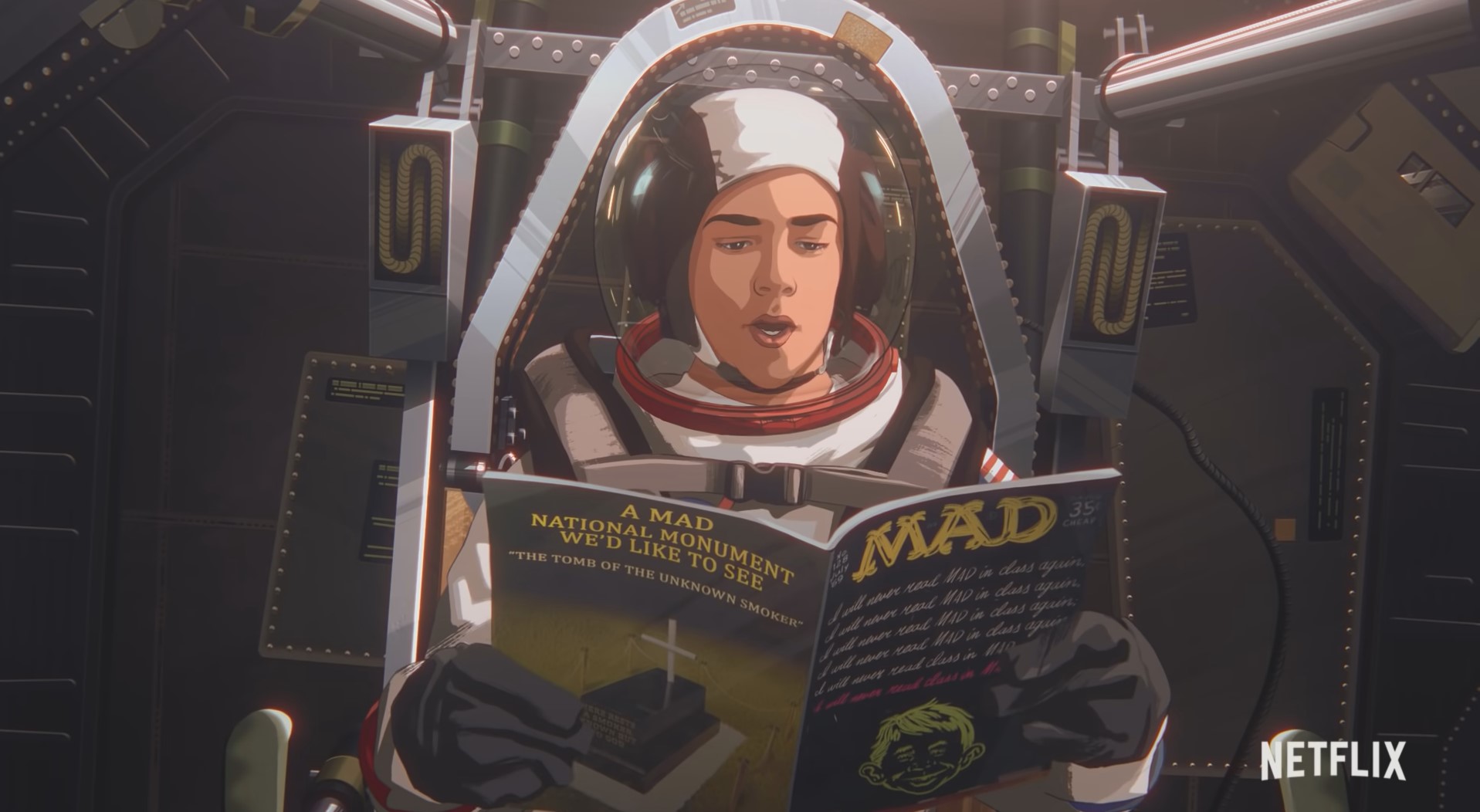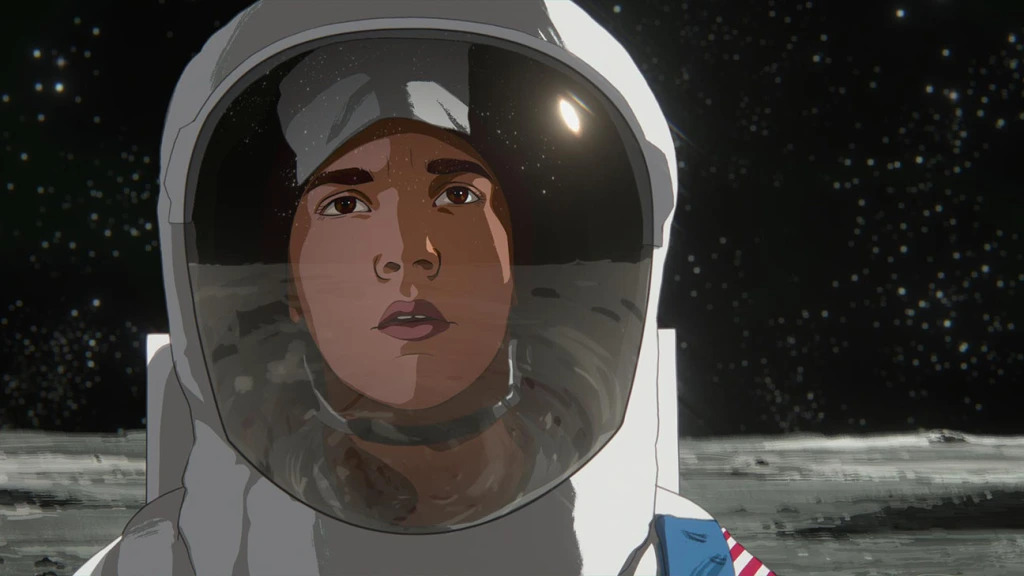If cinema is one of the few art forms where you have to use more than one sense to experience it, then Richard Linklater’s ‘Apollo 10½: A Space Age Childhood’ demands that you immerse yourself completely. And really, it’s not that hard to do. The film is set right on the zenith of the space race and revolves around the 1969 Apollo 11 Moon landing, told through the perspective of a boy.
‘Apollo 10½: A Space Age Childhood’ is inspired by Linklater’s own childhood in the Houston area and those of his friends and family members. In this way, the plot is incredibly exclusive. It is the mission to the Moon aspect that makes the film truly universal. Here is everything you need to know about the ending of ‘Apollo 10½: A Space Age Childhood.’ SPOILERS AHEAD.
Apollo 10 1/2: A Space Age Childhood Plot Synopsis
Visually, the animation in ‘Apollo 10 1/2: A Space Age Childhood’ resembles Linklater’s own works, ‘Waking Life’ and ‘A Scanner Darkly,’ but it is much more playful here than in the older two films, reflecting its narrative. The film begins at the playground of the Ed White Elementary School in El Lago, Texas, in the spring of 1969. The narrator of the plot is Stanley or Stan (Jack Black). His younger self (Milo Coy) attends Ed White, where two men in suits and sunglasses approach him.
They take him to a secret location and tell Stan that his country needs him. They are apparently from NASA and have built a smaller-than-standard lunar module, in which only a boy of Stan’s age and size can fit. As the space race has heated up, they need to test their machines and calculations one last time before the Apollo 11 Mission. So, they have decided to use the smaller module and send a boy to the surface of the Moon.
Stan, being pragmatic, asks why they are not sending a chimpanzee instead. One of the NASA officials (Zachary Levi) exasperatedly tells Stan that between the chimpanzee and him, he knows more words of the English language. NASA is apparently impressed with a “few” of Stan’s science reports and the fact that he has won not one, not two, but three consecutive annual Presidential Physical Fitness Awards. After Stan agrees, the other NASA official (Glen Powell) tells Stan that everything about the mission will be secret. Stan’s training will start at the end of the school year under the pretext of him going to a summer camp. He can’t obviously tell anyone about this, including his family.

Right when Stan is about to throw up during his training, the plot shifts, and the focus is suddenly on his home life. The film heavily depends on the narration. It is the driving force behind the plot. The older Stan reflects on his life in the late 1960s. His father, like many adults in the neighborhood, works for NASA. He is the head of the shipping and receiving at NASA, while Stan’s mother attends grad school and takes care of the family.
Stan is the youngest of six siblings. He has three older sisters — Vicky, Jana, and Stephanie — and two older brothers —Steve and Greg. Stan’s father is incredibly frugal and often ends up becoming a source of embarrassment for his children. We are introduced to a remarkable assortment of other character groups — people from Stan’s neighborhood, his grandparents from both sides, his father’s colleagues, Stan’s friends, and other members of his baseball team, to name a few.
Amidst all this, in one of the turning points in American history, Stan and his siblings grow up. The film spends nearly 50 minutes exclusively exploring various facets of Stan’s and his family’s lives before returning to that moment when he throws up. Older Stan claims that he went to the Moon in secret in a mission called Apollo 10 ½ while the rest of the world waited with bated breath as the day of the Apollo 11 mission approached.
Apollo 10 1/2: A Space Age Childhood Ending: Does Stan Really Go to the Moon? Does the Apollo 10½ Mission Really Take place?
Stan is our window to this beautiful world that Linklater has created. It just happens to take place against the backdrop of one of the most important eras in human history. We see the first-ever Moon landing unfold through the eyes of a boy with a fertile imagination. He hears the talks of everything that is happening around him and absorbs it like a sponge before letting it all out in the sphere of his own creativity. During one of the lazy days at the playground in front of his school, Stan weaves a reality in which he has been approached by two government agents, asking him to step up when his country needs him.
Stan spends his time at Camp Grizzly, an outdoor camp outside Lake Traverse, Michigan, thinking about the training of the astronauts. He has read about it enough and heard about it enough to have a superficial idea of how everything happens, so he envisions himself training for his upcoming launch. He even imagines traveling to the Moon and back. After all, space travel had been attempted before, but that recreation in his mind lacks the details of his other imaginations. It is only when he witnesses the journey of Apollo 11 on television that the void in his imagination gets filled by the information he receives. This includes the landing and Neil Armstrong’s walk on the Moon.

No, Stan really doesn’t go to the Moon, nor does the Apollo 10½ Mission really takes place. He is the representative of millions of people all over the world who watch as the moon landing takes place and picture themselves inside Armstrong’s suit. The moon landing wasn’t just an important milestone in terms of history and science, it also expanded the scope of our collective imagination. In the American context, it was the culmination of the prosperity and progress that the country has experienced since the end of World War II.
While the film is teeming with nostalgia and wistfulness for a bygone era, it doesn’t shy away from depicting the other prevalent issues of the time — from the Vietnam War to the assassinations of several political leaders to the Civil Rights Movement. However, as Older Stan admits, he grew up in a suburb, and all those aforementioned things didn’t really exist for most of them beyond the news programs on TV. The only exception is Vicky, the eldest of the siblings. She is quite aware of the state of the world at large and seems to have formed a political opinion significantly different from her Conservative parents.
Stan and his other siblings only become bothered with politics when people appear on TV and criticize the Apollo 11 Mission as excessive for a country that could have spent the money on things closer to Earth. Stan and the others get irritated by these opinions, and their feelings are then conformed by their parents’ dismissal of the critics. But even Vicky, who agrees with the critics, looks on with wonder and hope as Armstrong descends from the module. Like Stan, she, too, perhaps imagines herself walking on the Moon.
Read More: What Is the Meaning of Apollo 10½ Title? What Does it Signify?


You must be logged in to post a comment.